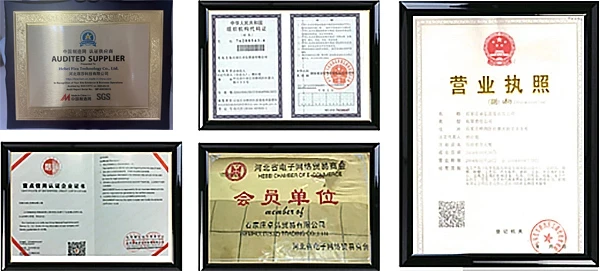



anionic polyacrylamide flocculant
Anionic Polyacrylamide Flocculant An Overview
Anionic polyacrylamide (APAM) is a water-soluble polymer that plays a crucial role in various industries due to its unique properties and applications. As an organic flocculant, it is widely used in wastewater treatment, mineral processing, papermaking, and agriculture, owing to its ability to improve sedimentation and clarify liquids. This article delves into the characteristics, applications, advantages, and environmental considerations of anionic polyacrylamide flocculants.
Characteristics of Anionic Polyacrylamide
Anionic polyacrylamide is synthesized through the polymerization of acrylamide and acrylic acid, resulting in a long chain polymer with a negative charge. The anionic nature of APAM allows it to interact effectively with cationic and neutral particles, leading to the agglomeration of suspended solids. Its molecular weight can vary significantly, typically ranging from several hundred thousand to several million daltons, which influences its performance in different applications.
One of the defining features of anionic polyacrylamide is its solubility in water, enabling it to disperse easily and act quickly upon addition to treatment processes. Its viscosity is another essential property, as it can increase the thickness of slurry or sludge, aiding in the separation of solid and liquid phases. Moreover, APAM is capable of functioning under a wide range of pH levels, making it versatile across various industrial contexts.
Applications of Anionic Polyacrylamide
1. Wastewater Treatment One of the primary applications of APAM is in the treatment of industrial and municipal wastewater. It is effective in aggregating suspended solids, thus enhancing sedimentation and clarifying effluents. This is particularly important in sectors like mining, textiles, and food processing, where wastewater contains high levels of particulates.
2. Mineral Processing In the mining industry, anionic polyacrylamide is used to facilitate the separation of valuable minerals from ore. The flocculant aids in settling and dewatering slurries, optimizing the extraction process and improving overall productivity.
3. Papermaking The paper industry utilizes APAM as a retention agent, helping to bind fine fibers and fillers together. This enhances sheet formation, reduces the amount of raw materials needed, and promotes more efficient water usage during production.
4. Agriculture In agricultural practices, APAM can be applied to improve soil structure and moisture retention. It helps in reducing erosion and improving water retention in soils, thereby enhancing crop yield and sustainability.
anionic polyacrylamide flocculant

Advantages of Anionic Polyacrylamide
The use of anionic polyacrylamide in various processes brings several advantages
- Efficiency APAM significantly enhances the rate of sedimentation and dewatering, which leads to time savings in treatment processes.
- Cost-Effectiveness By improving the efficiency of separation processes, APAM reduces the overall operational costs associated with waste management and resource recovery.
- Environmentally Friendly Anionic polyacrylamide is often favored because it is less toxic compared to many traditional flocculants, making it a safer choice for use in sensitive environments.
Environmental Considerations
While anionic polyacrylamide is generally considered to be non-toxic, it is essential to use it responsibly. Improper handling and disposal can lead to environmental concerns, such as the potential for aquatic toxicity and soil contamination. It is crucial to follow appropriate guidelines for its application and to monitor its use in industrial processes to mitigate any adverse effects.
Conclusion
Anionic polyacrylamide flocculants represent a significant advancement in the management of liquids in various industrial applications. Their ability to enhance sedimentation and improve the clarity of liquids makes them invaluable in wastewater treatment, mineral processing, papermaking, and agriculture. As industries continue to prioritize efficiency and sustainability, the demand for APAM will likely grow, and ongoing research will further refine its applications and benefits within diverse sectors. Proper management and awareness of environmental impacts will ensure that anionic polyacrylamide continues to be a responsible choice in industrial practices.
-
Why Sodium Persulfate Is Everywhere NowNewsJul.07,2025
-
Why Polyacrylamide Is in High DemandNewsJul.07,2025
-
Understanding Paint Chemicals and Their ApplicationsNewsJul.07,2025
-
Smart Use Of Mining ChemicalsNewsJul.07,2025
-
Practical Uses of Potassium MonopersulfateNewsJul.07,2025
-
Agrochemicals In Real FarmingNewsJul.07,2025
-
Sodium Chlorite Hot UsesNewsJul.01,2025










